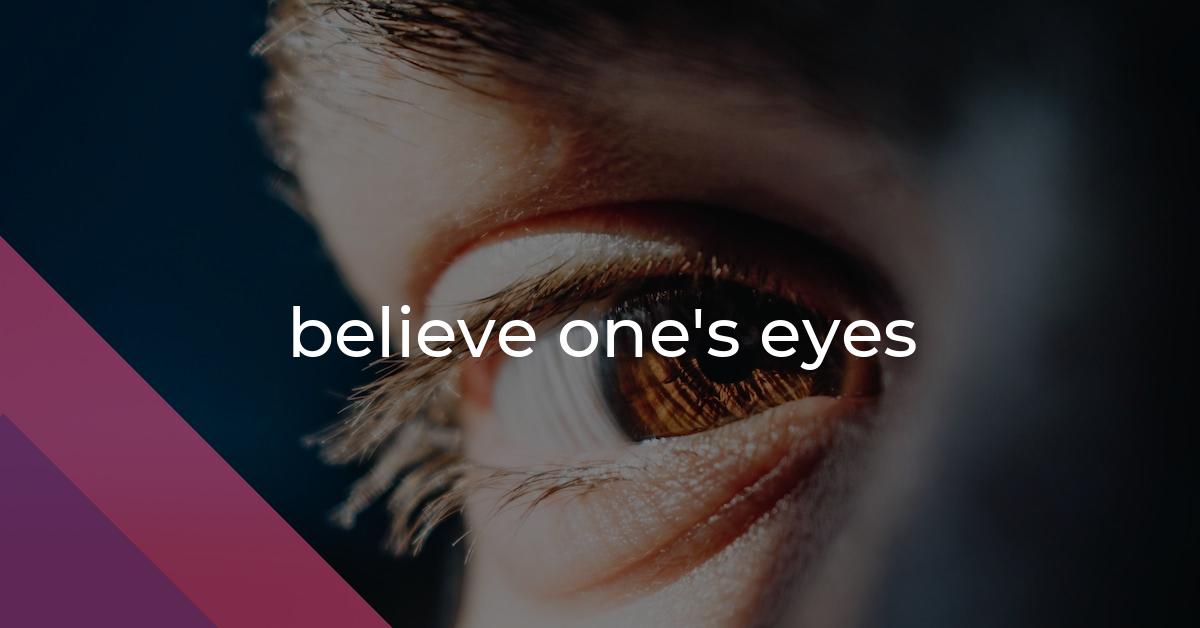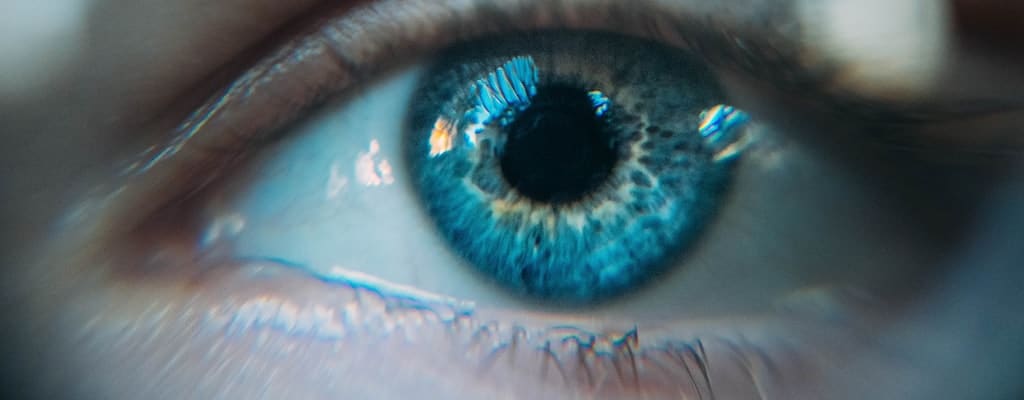believe one’s eyes: Idiom Meaning and Origin
What does ‘believe one's eyes’ mean?
The idiom *believe one's eyes* means to accept or trust what one sees, often when it is surprising or hard to believe.

Idiom Explorer
The idiom "lay eyes on" means to see or look at something. It implies that the person looking at something has a strong desire or interest in it.
The idiom "keep one's eyes peeled" means to stay alert and watchful, paying close attention to one's surroundings in order to notice any important or significant details or changes.
The idiom "I see, said the blind man" is a sarcastic remark used to question the credibility of a statement or to express doubt or disbelief. It suggests that the speaker understands or acknowledges the statement, even though they may not actually "see" it.
The idiom "in a pig's eye" is used to express disbelief or skepticism towards something, suggesting that it is highly unlikely or impossible to be true.
The idiom "have eyes in the back of one's head" means to be exceptionally observant or aware of one's surroundings. It implies a heightened ability to notice things that others might miss.
The idiom "have eyes bigger than one's stomach" means to take or desire more than one can actually consume or handle.
The idiom "go with one's gut" means to rely on one's intuition or instinct when making a decision, rather than using logical reasoning or analysis.
The idiom "give someone the eye" means to look at someone in a way that shows interest or attraction. It is often used to describe a flirtatious or seductive look.
The idiom "face value" means to accept something as it appears, without questioning or doubting its truth or meaning. It refers to evaluating something based solely on its outward appearance or initial impression.
Unmasking the Mystical
The idiom "believe one's ears" is closely related to "believe one's eyes" and is used to convey a similar sense of astonishment or disbelief, but in relation to what is heard rather than what is seen. Just as the eyes can deceive, so too can the ears, and when someone says they "can't believe their ears," they are expressing incredulity at what they are hearing. The idiom suggests that the information or sound being heard is so astonishing or unbelievable that the individual is questioning the reliability of their own hearing.
A similar idiom, "believe it or not," is often used when recounting a surprising or unbelievable fact or story. It is a way of capturing the listener's attention and emphasizing the extraordinary nature of what is being shared. This phrase reinforces the idea that sometimes reality can be stranger than fiction and that there are countless wonders and phenomena in the world that may seem hard to believe.
The expression "by the eye" is another idiomatic phrase that relates to the theme of relying on one's vision. It is often used to describe an assessment or judgment made solely based on what can be seen. When someone makes a decision "by the eye," they are trusting their own perception and instinct, often without relying on additional information or evidence. This idiom reflects the idea that visual cues play a powerful role in shaping our understanding and forming opinions.
On the other hand, the idiom "in a pig's eye" is used to express skepticism or disbelief towards a statement or claim. When someone dismisses something as being "in a pig's eye," they are implying that it is highly unlikely, if not impossible, to be true. This phrase reflects the idea that pigs have poor eyesight and suggests that what is being claimed or observed is so implausible that it can be compared to something that a pig would not be able to see.
Lastly, the idiom "lay eyes on" is often used to describe the act of seeing or encountering something for the first time. It signifies the moment when someone's eyes make contact with something or someone of interest. When we "lay eyes on" something, it implies a sense of curiosity, anticipation, or even surprise. This idiom captures the excitement and impact of a first impression.
The idioms "believe one's ears," "believe it or not," "by the eye," "in a pig's eye," and "lay eyes on" all share a common thread with the idiom "believe one's eyes." They all involve the act of perceiving, whether it be through sight or sound, and convey a sense of astonishment, disbelief, judgment, skepticism, or curiosity. These idioms remind us of the limits of our perception and the remarkable and sometimes unbelievable nature of the world around us. They add color and depth to our language, allowing us to express and communicate our thoughts and emotions in a nuanced and vivid way.
Example usage
Examples of how the idiom "believe one's eyes" can be used in a sentence are:
- When I reached the top of the mountain and saw the breathtaking view, I couldn't believe my eyes.
- After months of searching, she couldn't believe her eyes when she found her long-lost childhood toy in the attic.
- As the magician performed his tricks, the audience couldn't believe their eyes as objects seemingly disappeared and reappeared.
The idiom "believe one's eyes" is used to describe a situation where someone is astonished or in disbelief by what they are seeing. It emphasizes the idea that their eyes are providing evidence that goes beyond what they expected or thought was possible. The idiom is often used to convey a sense of wonder, surprise, or amazement at what one is witnessing visually.
More "Verbs" idioms



